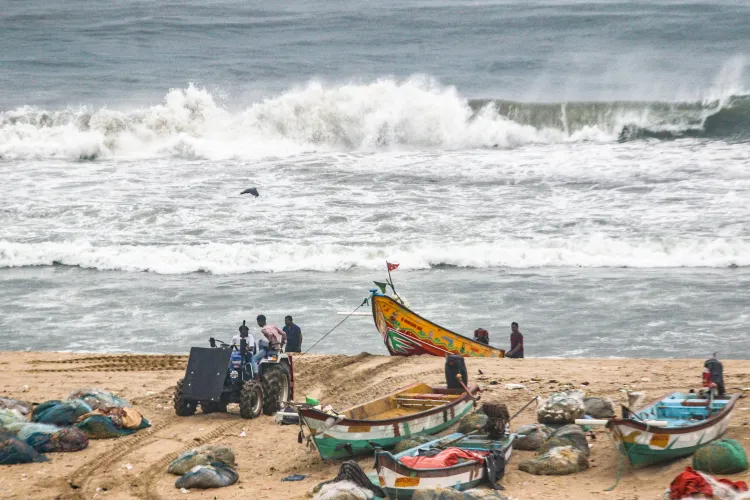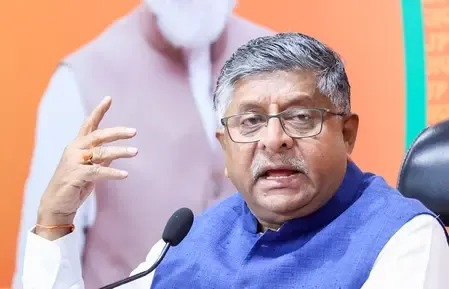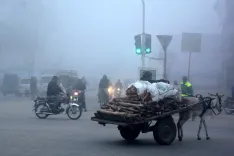What Impact Did Cyclone ‘Montha’ Have Near Kakinada?

Synopsis
Key Takeaways
- Cyclone Montha made landfall near Kakinada with wind speeds up to 110 kmph.
- Heavy rains and strong winds affected coastal districts.
- Authorities are on alert for possible flooding and emergencies.
- Precautions for fishermen are in place due to rough sea conditions.
- Moderate rainfall is expected in Tamil Nadu for six days.
Chennai, Oct 29 (NationPress) Cyclone Montha made landfall close to Kakinada in Andhra Pradesh early Wednesday, unleashing torrential downpours and fierce winds across coastal regions.
The India Meteorological Department (IMD) verified that the cyclone, which originated over the southeast Bay of Bengal earlier this week, hit land between Machilipatnam and Kalingapatnam with wind speeds soaring up to 110 kmph.
According to IMD officials, Montha brought heavy rainfall along with thunder and lightning to various areas of Krishna and Machilipatnam districts, uprooting trees and causing property damage.
In Alluri district, a woman tragically lost her life after a tree fell on her during the storm, and two others suffered serious injuries requiring hospitalization.
Disaster management teams were mobilized to remove fallen trees and restore power in the affected regions. The severe cyclonic storm, which had been tracking northwest since Monday, has weakened slightly post-landfall but is anticipated to deliver widespread rainfall across southern India.
The IMD indicated that due to Montha’s impact, Tamil Nadu is expected to experience moderate rainfall for the upcoming six days.
A weather bulletin released early Wednesday cautioned that gusty winds of 45 to 55 kmph, occasionally reaching 65 kmph, may affect the coastal areas of Tamil Nadu, Puducherry, and the Kanyakumari Sea.
Fishermen have been urged to refrain from going out to sea until conditions improve. In Chennai, the weather is expected to remain predominantly cloudy with sporadic light to moderate showers.
The Greater Chennai Corporation and the Tamil Nadu Disaster Management Authority have activated all emergency control rooms to address potential rain-related emergencies.
Authorities in Tamil Nadu have also instructed local administrations to vigilantly monitor water levels in rivers and reservoirs and implement preventive measures in low-lying and flood-prone areas.









